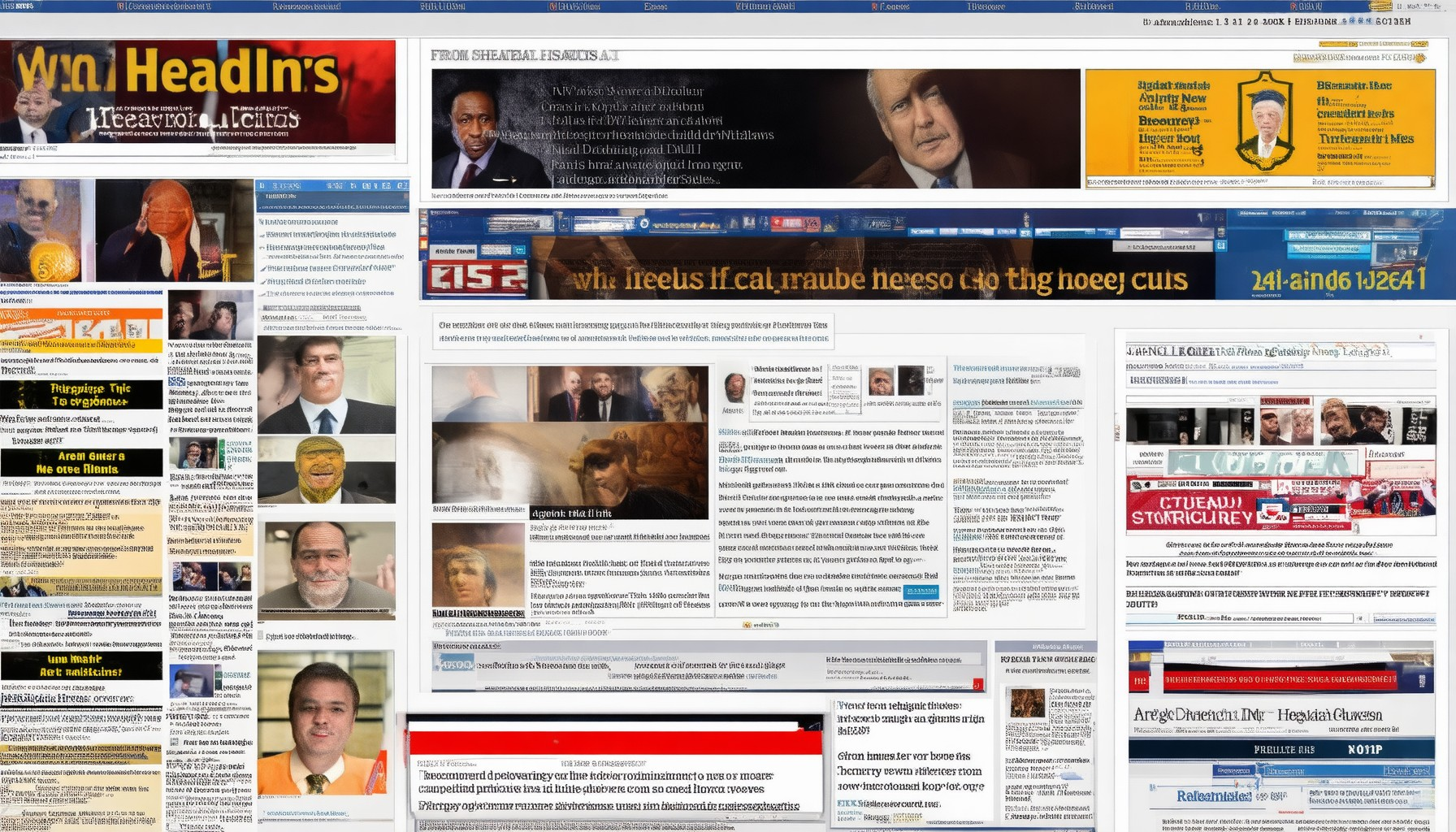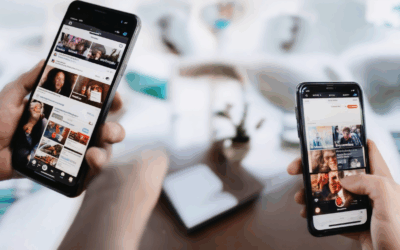Stay informed with the latest updates on breaking news coverage, where every headline tells a story and shapes our understanding of the world around us. From global updates to local headlines, breaking news keeps us connected to current events that matter most. Whether it’s major political developments, natural disasters, or cultural shifts, staying ahead of the curve is essential in today’s fast-paced world. This comprehensive guide dives into the ins and outs of breaking news coverage, offering insights into how to navigate, interpret, and engage with the latest happenings. Discover tips on crafting compelling headlines, strategies for securing media attention, and techniques for effectively pitching your story to reporters. Whether you’re a journalist, a blogger, or simply someone who wants to stay well-informed, this guide has got you covered.
Key Takeaways
– Identify Target Media Outlets: Tailor your approach to align with local newspapers, TV stations, and online platforms that resonate with your audience.
– Prepare High-Quality Content: Craft compelling press releases with clear headlines, background info, and visuals to enhance appeal.
– Reach Out Proactively: Contact journalists via email or social media, using tools like Cision or Muck Rack to find relevant reporters.
– Engage with Journalists: Build relationships by interacting with their content and using hashtags to increase visibility.
– Leverage Partnerships: Collaborate with local businesses or organizations to expand your reach through shared networks and events.
– Optimize Timing and Presentation: Share news timely and ensure content is SEO-friendly, posting press releases on your website and via social media.
– Consider Press Conferences: Host or book virtual/physical events for media attendance to boost coverage.
– Evaluate Unique Angles: Highlight community impact and solutions to problems to make your story more engaging.
– Track Success and Adjust Tactics: Monitor mentions and Google News results to refine your strategy for better outcomes.
– Build Relationships with Reporters: Tailor pitches to align with reporters’ beats and preferences, using tools like Cision or Muck Rack.
– Use Press Releases Strategically: Enhance engagement with multimedia elements like videos or infographics.
– Understand Deadlines and Offer Value: Provide exclusive access, quotes, or unique angles to add value to stories.
– Highlight Social Proof: Mention notable figures or influencers to attract attention and build credibility.
– Amplify Through Platforms: Share stories on Twitter or LinkedIn post-publication to increase visibility.
– Proofread Thoroughly: Maintain professionalism by ensuring error-free materials.
– Follow Up Politely: Respect reporters’ schedules by gently reminding them if needed.
– Verify Links and Contact Methods: Ensure all links work and use preferred communication methods to avoid misunderstandings.
– Research Reporters and Craft Compelling Hooks: Start with surprising facts or questions and tailor pitches to align with mediums like digital platforms or traditional outlets.
– Outline Story Structure and Support with Evidence: Provide clear narratives and credible sources to strengthen pitches.
– Offer Assistance and Personalize Pitches: Propose timelines and show willingness to support reporters, addressing them by name to demonstrate genuine interest.

What is Breaking News Coverage?
Breaking news, also known as late-breaking news or special coverage, refers to a type of news reporting that prioritizes the immediate dissemination of critical and impactful events. This coverage typically interrupts scheduled programming to provide timely updates on significant occurrences that demand urgent attention.
Breaking news stories often involve events of broad public interest, such as natural disasters, political developments, accidents, or major announcements. Media outlets prioritize these stories due to their potential to affect large audiences and influence public opinion. The goal is to inform viewers quickly and accurately, ensuring they are well-informed about unfolding situations.
One of the key aspects of breaking news coverage is its immediacy. Updates are often provided as they unfold, allowing audiences to stay informed in real-time. This approach requires quick decision-making and adaptability on the part of journalists and news organizations, as circumstances can change rapidly.
Breaking news coverage has evolved significantly with the rise of digital media. Social media platforms now play a crucial role in disseminating breaking news, enabling rapid dissemination of information and fostering a more interactive relationship between media outlets and their audiences.
Aozzora, as a leading digital news platform, is committed to providing comprehensive and unbiased breaking news coverage. Our team of experienced journalists works tirelessly to bring you the latest developments as they happen, ensuring that you have access to the information you need to stay informed.
For more in-depth analysis and updates on various topics, explore our dedicated sections and stay connected with us through our mobile app. We strive to deliver high-quality content that meets the highest standards of journalism.
Stay ahead with Aozzora – your trusted source for the latest news and updates.
Most Talked About News Today
The most discussed topics in recent days revolve around significant global events and domestic developments:
- Global Events:
- The ongoing conflict in Ukraine continues to dominate international headlines, with recent developments in military aid and peace talks.
- The US Presidential Election campaign heats up as candidates prepare for the November midterms, focusing on key issues like healthcare and economy.
- Global climate protests intensify ahead of the COP27 summit , urging faster action on renewable energy and carbon reduction.
- Domestic Developments:
- The AI regulation debate in the US gains momentum, with Congress considering new laws to oversee artificial intelligence technologies.
- The UK monarchy faces scrutiny following the death of King Charles III, sparking discussions on constitutional reform and royal succession.
- Economic uncertainty persists as inflation rates rise globally, with central banks weighing options for monetary policy adjustments.
- Tech and Innovation:
- The metaverse sector sees renewed interest, with major companies announcing new investments and projects at the recent Web3 Summit .
- A breakthrough in space exploration occurs as private companies successfully test reusable rocket technology, potentially lowering launch costs.
- Miscellaneous:
- The release of the latest blockbuster film has sparked debates over its portrayal of historical events and cultural accuracy.
- Major sports leagues announce new rules changes aimed at increasing player safety and fair competition, drawing mixed reactions from fans and analysts.

Alternative Phrases for “Breaking News”
- Urgent updates
- Important news
- Critical updates
- Latest updates
- Breaking development
- Emerging situation
- Major update
- Developing story
- Top story
- Urgent news
- Breaking headline

How to Get News Coverage
To effectively gain news coverage, follow these organized steps:
- Identify Target Media Outlets: Determine which media outlets are most relevant to your story. Consider local newspapers, TV stations, and online platforms that align with your audience.
- Prepare High-Quality Content: Craft a compelling press release or pitch. Include a clear headline, background information, and explain why your story is newsworthy. Use visuals like images or videos to enhance appeal.
- Reach Out Proactively: Contact journalists via email or social media. Look for reporters covering similar topics on newspapers’ websites or LinkedIn. Use general media inquiries or specific contacts listed on media outlets.
- Engage with Journalists: Build relationships by retweeting or commenting on journalists’ social media posts. Use relevant hashtags to increase visibility and facilitate discovery.
- Leverage Partnerships: Collaborate with local businesses or organizations to broaden your reach. Attend networking events or utilize LinkedIn to connect with potential partners who may assist in spreading your story.
- Consider Timing and Presentation: Share news timely but not excessively soon. Optimize your content for SEO by using relevant keywords and ensuring accessibility online. Post press releases on your website and share via social media.
- Hold Press Conferences if Appropriate: For significant events, organize a press conference. Book a venue or host it virtually, inviting media representatives to attend and cover your story.
- Evaluate Story Angles: Highlight unique aspects or community impact. Emphasize solutions to problems, making your story more engaging and newsworthy.
- Track Success and Adjust Tactics: Monitor mentions and Google News results. Gather feedback to refine your approach. Adjust strategies based on what yields results.
By combining proactive outreach, high-quality content, and strategic engagement, you can effectively secure news coverage and maximize your story’s visibility.
How to Get a Reporter to Cover Your Story
To successfully engage a reporter and secure coverage for your story, follow these organized steps:
- Build Relationships:** Identify reporters who have covered similar topics by using tools like Cision or Muck Rack. Tailor your pitch to reflect their previous work.
- Use Press Releases:** Craft a clear and concise press release. Include multimedia elements like videos or infographics to enhance engagement.
- Understand Deadlines:** Confirm the reporter’s deadlines and aim to submit your materials ahead of time to meet their requirements.
- Offer Value:** Provide exclusive access, quotes from experts, or unique angles to add value to their story.
- Highlight Social Proof:** Mention notable figures or influencers involved to attract more attention and credibility.
- Amplify Through Platforms:** Share the story on platforms like Twitter or LinkedIn after publication to increase visibility.
- Proofread:** Ensure your materials are error-free to maintain professionalism.
- Follow Up Politely:** Send a gentle reminder if you haven’t heard back, respecting their schedule and preferences.
- Check Contact Methods:** Use the reporter’s preferred communication method, whether email or phone, to avoid misunderstandings.
- Verify Links:** Ensure all external links in your press release function correctly to prevent errors.

Pitching a Story to a Reporter
To successfully pitch a story to a reporter, consider the following structured approach:
- Research the Reporter:** Identify the reporter’s beat and preferences. Tailor your pitch to align with their expertise and interests.
- Craft a Compelling Hook:** Start with a surprising fact, statistic, or intriguing question to grab attention. Ensure accuracy and truthfulness in your opening.
- Outline the Story Structure:** Provide a clear narrative arc, including an introduction, background information, key events, and supporting evidence. Consider including expert opinions and quotes to enhance credibility.
- Match the Medium:** Adjust your tone and style to suit the publication. Formality may be required for traditional outlets, while a more casual tone might be suitable for digital platforms.
- Support with Evidence:** Include supporting documents, data, or links to sources. Citations from reliable sources strengthen your pitch.
- Brief Introduction:** Mention your own credentials succinctly to establish credibility without appearing arrogant.
- Offer Assistance:** Suggest a timeline for the story and propose further details or interviews. Show willingness to support the reporter’s investigation.
- Personalize the Pitch:** Address the reporter by name and demonstrate familiarity with their work to show genuine interest and effort in pitching.
- Be Concise:** Keep your pitch concise to respect the reporter’s time. Avoid lengthy paragraphs and unnecessary details.
- Proofread:** Ensure the pitch is free of typos and grammatical errors to maintain professionalism.
Including a call to action, such as offering additional information or arranging an interview, can demonstrate initiative. However, avoid overwhelming the reporter with excessive details. By balancing professionalism with humility and clarity, you can present a compelling and well-organized pitch that captures the reporter’s interest.





0 Comments